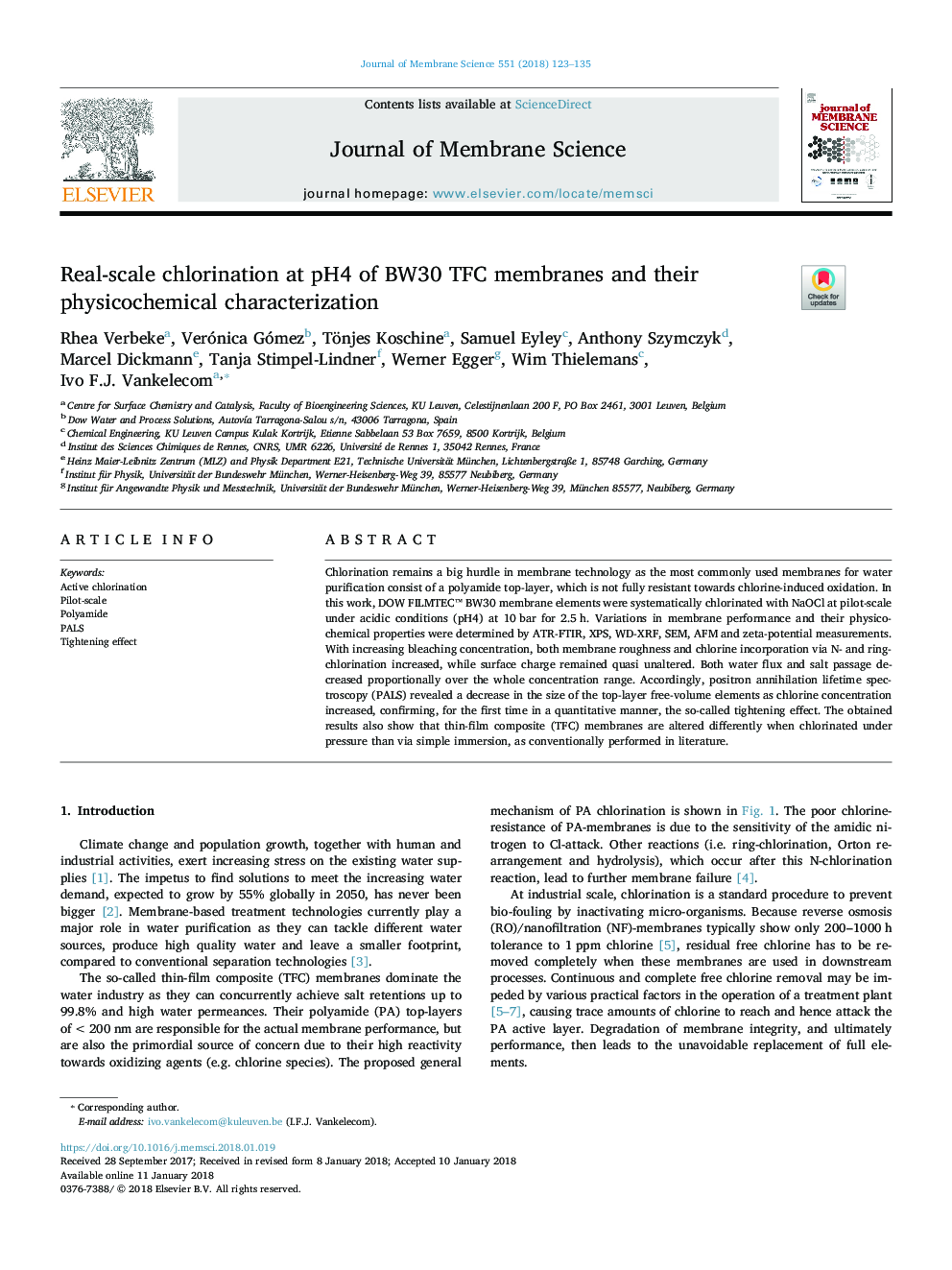| Article ID | Journal | Published Year | Pages | File Type |
|---|---|---|---|---|
| 7020088 | Journal of Membrane Science | 2018 | 13 Pages |
Abstract
Chlorination remains a big hurdle in membrane technology as the most commonly used membranes for water purification consist of a polyamide top-layer, which is not fully resistant towards chlorine-induced oxidation. In this work, DOW FILMTEC⢠BW30 membrane elements were systematically chlorinated with NaOCl at pilot-scale under acidic conditions (pH4) at 10 bar for 2.5 h. Variations in membrane performance and their physicochemical properties were determined by ATR-FTIR, XPS, WD-XRF, SEM, AFM and zeta-potential measurements. With increasing bleaching concentration, both membrane roughness and chlorine incorporation via N- and ring-chlorination increased, while surface charge remained quasi unaltered. Both water flux and salt passage decreased proportionally over the whole concentration range. Accordingly, positron annihilation lifetime spectroscopy (PALS) revealed a decrease in the size of the top-layer free-volume elements as chlorine concentration increased, confirming, for the first time in a quantitative manner, the so-called tightening effect. The obtained results also show that thin-film composite (TFC) membranes are altered differently when chlorinated under pressure than via simple immersion, as conventionally performed in literature.
Keywords
Related Topics
Physical Sciences and Engineering
Chemical Engineering
Filtration and Separation
Authors
Rhea Verbeke, Verónica Gómez, Tönjes Koschine, Samuel Eyley, Anthony Szymczyk, Marcel Dickmann, Tanja Stimpel-Lindner, Werner Egger, Wim Thielemans, Ivo F.J. Vankelecom,
